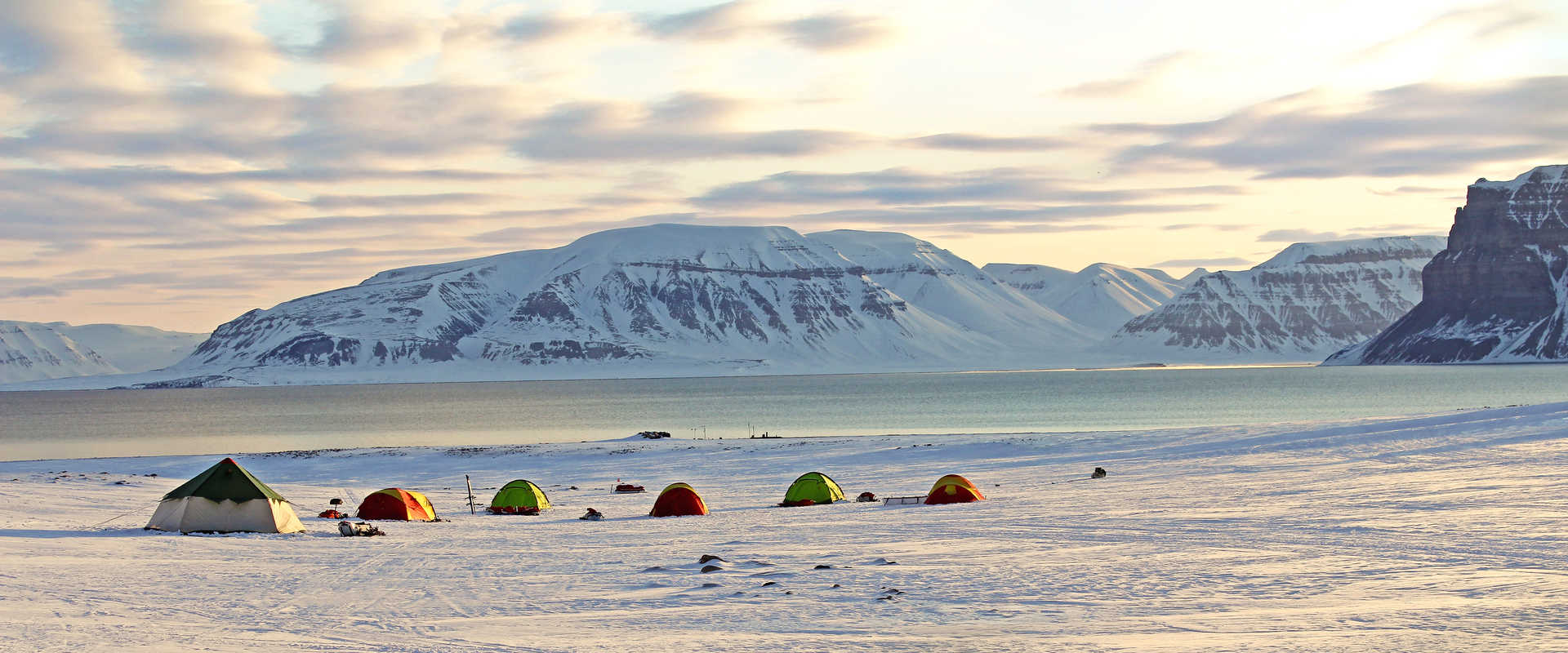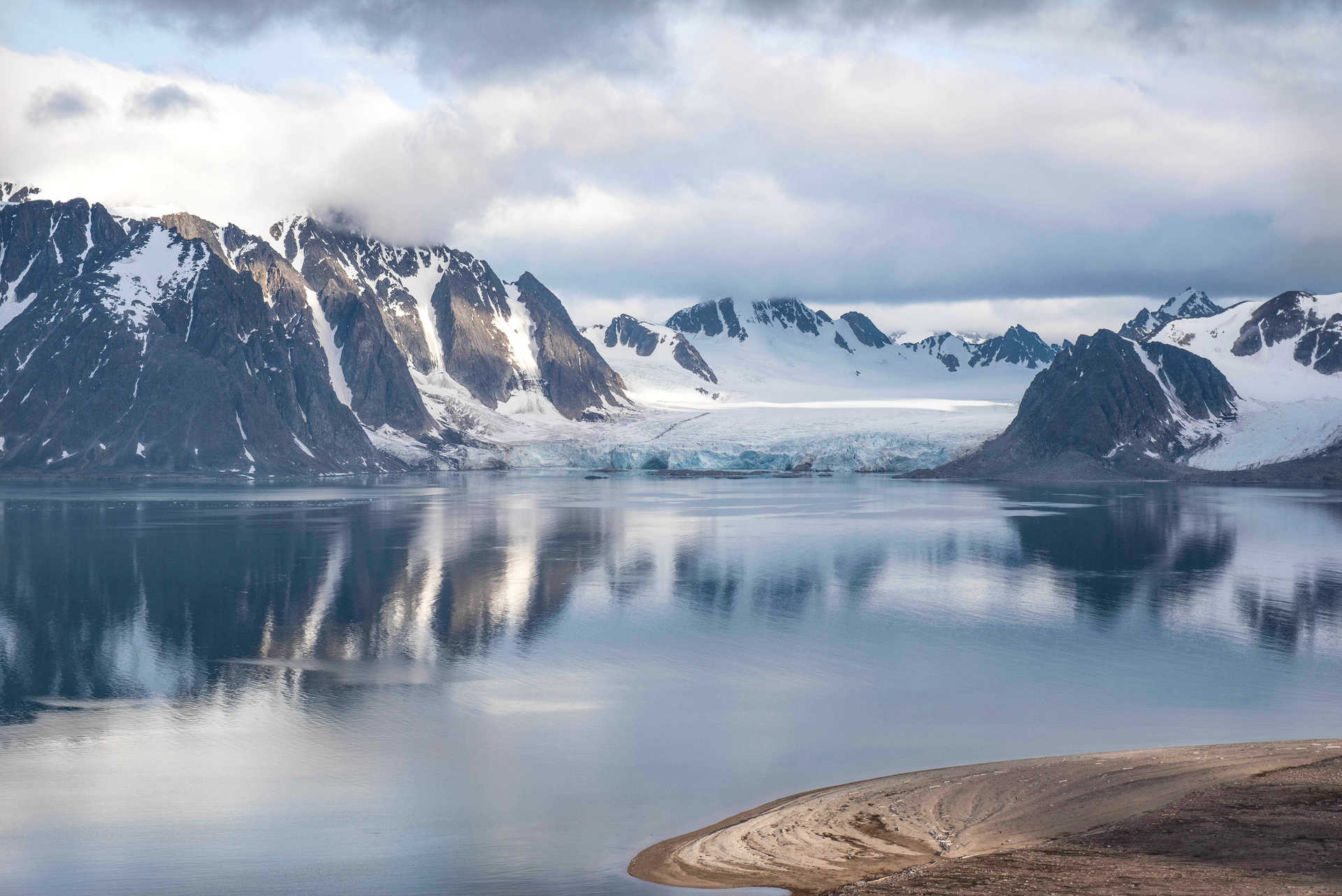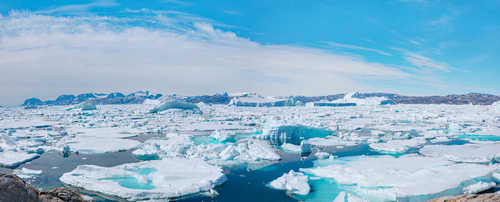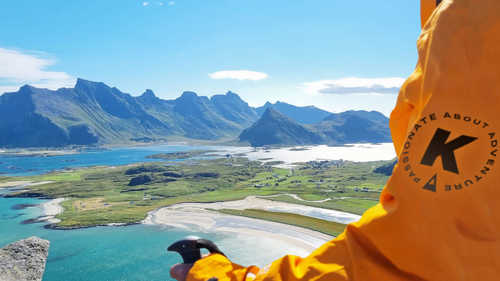
Geography
The Svalbard islands are located between 74° and 81° north, the most northerly part of Europe extending well into the Arctic circle. This region comprises one of the largest deserts on earth, the Arctic polar desert. Despite not fitting into the traditional view of a desert (ie hot and sandy!) the low annual rainfall is low enough to class it as a desert. The ground in Svalbard however is permanently frozen. This is known as permafrost and only the top layer (approx. 1 meter) defrosts in the summer. This freezing prevents water from running further down into the ground, and can cause a very wet terrain. Pingos are tall mounds of gravel-covered ice found in areas of permafrost. A pingo is created by water being pushed up through a weak layer in the permafrost. The water pushes loose soil up and forms a mound. Pingos can be up to 40 meters tall.
This is a stark environment. Around 60% of Svalbard is covered in glacial ice and 30% is barren rock, with mountain peaks rising up to 1700 metres. Glaciers, covering the majority of the island, contain crevasses and channels of melted water that are covered by snow bridges almost all year round. Crevasses and other openings in the glacier are very difficult to spot. The largest crevasses are usually found by the glacier front, in areas with icefall and where the terrain under the glacier is uneven. You will also find crevasses between glacier and mountain, and where glaciers meet. Glaciers can calve on land and into the sea. Calving can also occur in all seasons, causing large cracks and tidal waves in the ice. Small ice bergs formed by calving from the glaciers
Svalbard is a land of extremes. During the polar night, from November to February, it remains dark with only moonlight or the northern lights providing any light when the sky is clear. Then from mid April to mid August, the sun never drops below the horizon as Svalbard enjoys the midnight sun.
The arctic climate creates a harsh environment but it is also surprisingly fragile. It is vital that human activity does not have catastrophic effects on these remote areas which are so vulnerable to external influences. Kandoo have long been a supporter of Leave No Trace and we apply these principles in Svalbard as we do in all our destinations to ensure that we help to preserve these unique environments.













